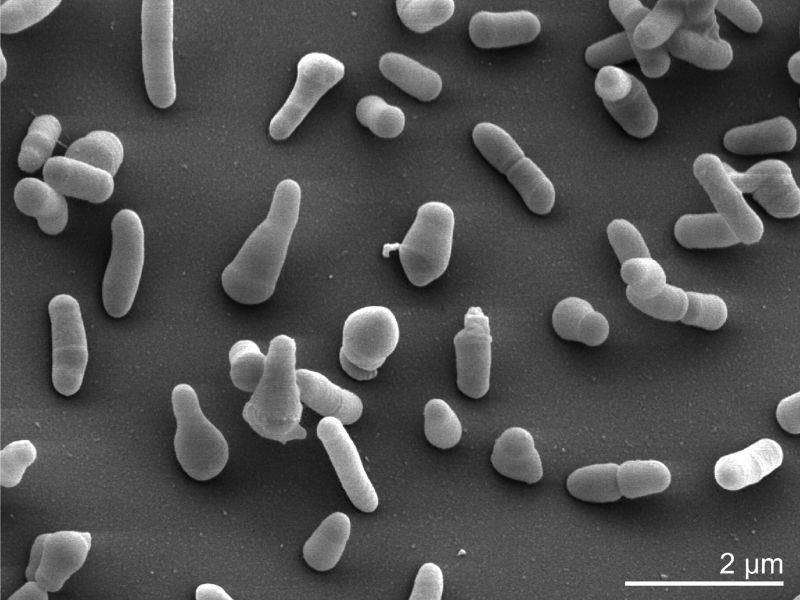Pilot Program Using Bacteria to Reduce Nitrate from Drinking Water
Published on by Marina A, Previously Key Account and Content Manager at AquaSPE AG in Technology
Delano will use bacteria to reduce nitrate by converting it into nitrogen gas.
The 3-year program, funded by a $5 million state grant could serve as a model for addressing nitrate contamination in groundwater.
 Nitrate is the second most common contaminant in groundwater aquifers that are used by more than 75 percent of the state's regulated public water systems. It is especially widespread in the Tulare Lake and Salinas basins.
Nitrate is the second most common contaminant in groundwater aquifers that are used by more than 75 percent of the state's regulated public water systems. It is especially widespread in the Tulare Lake and Salinas basins.
"Until now, public water systems have had to make a hard choice - either don't use the water, provide treatment or blend water contaminated with nitrate with clean water from another location," said the State Water Board's Division of Drinking Water Deputy Director Cindy Forbes in a news release. "If successful, this pilot program could clear the way for an innovative treatment and provide another option for communities that want to treat their existing groundwater for potable use by residents."
According to a 2013 report to the Legislature, more than 680 (out of 3,037) community water systems serving nearly 21 million residents relied on a polluted groundwater source affected by one or more "principal contaminants," such as arsenic or nitrate.
Of that number, 207 water systems like Delano had nitrate detections that required blending, or another type of treatment, before it could be used as a safe drinking water source.
The Delano pilot program takes an approach traditionally used in wastewater treatment called biological denitrification, which essentially uses bacteria to reduce nitrate by converting the common groundwater contaminant into nitrogen gas.
By turning the nitrate into nitrogen gas, the process avoids generating a waste stream of nitrates that would have to be discarded safely somewhere else.
In the pilot program, Delano is treating water from one of 14 wells that serve a population of 55,000. While this well, identified as Well 35, is currently not used for producing drinking water for residential use, the supply well was used for the pilot program because it represents a source of future supply.
Denitrifying bacteria are naturally present in groundwater, and the treatment plant where the process is occurring was specifically designed to create an optimal environment for the biological process. A portion of the water is treated biologically.
Following the biological denitrification process, additional steps including filtration, disinfection and blending are taken to produce safe drinking water that meets the nitrate drinking water standard.
The city will be monitoring the treatment system on-site and remotely as part of the pilot program. Laboratory samples will be collected regularly and the results are reported to the State Water Board's Division of Drinking Water on a monthly basis.
To ensure optimum treatment, multiple continuous monitoring instruments and sensors are used to track the system's performance. Multiple alarms and automatic shutdowns are included, and this facility is programmed to shut down the treatment system should any problem arise.
In contrast, traditional treatment technologies for nitrate include ion exchange, reverse osmosis, and electrodialysis.
In California, water systems use blending of water sources, ion exchange treatment, and reverse osmosis treatment to produce safe drinking water for public consumption. The biological denitrification treatment used in this pilot program is not intended to replace existing approaches. It may serve as a cost-effective alternative for a public water system to use when considering local factors and economics related to providing safe drinking water.
Source: Kern Golden Empire
Media
Taxonomy
- Bacteria
- Water Treatment Solutions
- Groundwater Pollution
- water treatment
- Water Treatment & Control
- Groundwater Resource
2 Comments
-
By treatingthe waterwith our equipmentyougeta fullydisinfected water.Energy costsmake upno more than0.5kW per1m3 of drinking water.
tumentsev@inbox.ru -
Aqwise developed a few years ago a process to treat contaminated potable water - to remove nitrates, by using own MBBR technology. The system works successfully for more than 3 years, treating 1,400 m3/d potable water.